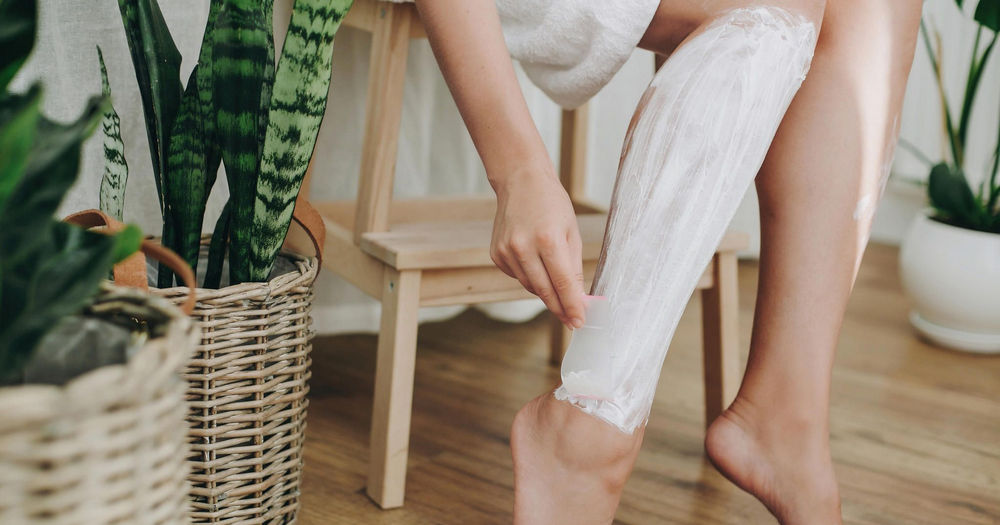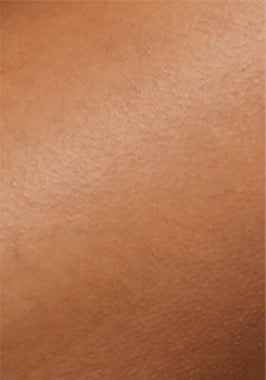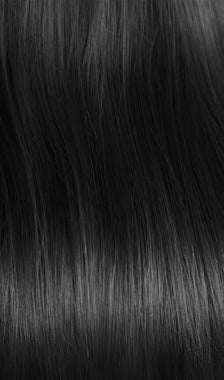There are many methods for removing unwanted hair, but one of the most common is certainly the depilatory cream. Its popularity is due to its ease of use and its ability to provide smooth skin without the pain of waxing or epilation. But how safe are these creams really?
In this article, we take a closer look at depilatory creams . Is depilatory cream harmful? We assess the potential harmfulness of depilatory creams and explain what you should bear in mind when using them. The aim is to enable you, the reader, to make a well-founded assessment of whether depilatory creams are a suitable method for you.

- Part 1: What is hair removal cream?
- Part 2: How does hair removal cream work?
- Part 3: Potential risks and side effects
- Part 4: Safety testing for depilatory creams: patch tests
- Part 5: IPL as an alternative to hair removal cream
- Part 6: And what do experts say about hair removal cream?
- Part 7: Summary: Find your perfect hair removal method
What is depilatory cream?
Depilatory creams, also called depilatories, are topical preparations that aim to remove unwanted body hair without mechanical action. These creams offer a practical alternative to traditional shaving, waxing or the use of epilators.
The way depilatory creams work is based on chemical ingredients that dissolve the protein structure of the hair. This allows the hair to be easily removed from the surface of the skin without affecting the hair root.
How does hair removal cream work?
chemical process
Depilatory creams contain active ingredients such as thioglycolic acid, which break the disulfide bonds in the hair's keratin. This causes the hair to dissolve and be easily wiped away from the skin.
Effect on the hair structure
By dissolving the hair on the skin's surface, the skin appears smooth and hair-free after using depilatory cream. The effect usually lasts longer than shaving because the hair is removed slightly below the skin's surface.
Potential risks and side effects
Depilatory creams offer a quick and easy solution for smooth skin, but they also pose risks , especially for people with sensitive or allergic skin. A study by "Stiftung Warentest" has confirmed the general tolerability of these products, with all creams tested receiving the rating "good", but the Federal Institute for Risk Assessment (BfR ) points out potential dangers.
Allergic reactions are one of the most common side effects of depilatory creams. Symptoms can vary from slight redness of the skin to itching or burning and are caused by ingredients such as thioglycolic acid, which effectively dissolves the hair structure but can irritate the skin or even burn it if used incorrectly. The intensity of these reactions depends on the individual skin sensitivity, the duration of exposure and the dosage of the cream.

It becomes particularly problematic when depilatory creams are applied to large areas or mucous membranes, which can lead to an overdose and severe skin irritation. The BfR stresses the importance of carefully following the dosage instructions and not exceeding the specified exposure time in order to avoid such reactions.
Before using for the first time, it is advisable to carry out a patch test by applying a small amount of cream to the skin on the inner wrist or in the crook of the arm. This will determine whether there are any allergic reactions to the ingredients before using the cream on larger areas of skin.
Despite the generally good tolerability, which Stiftung Warentest confirms, allergy sufferers in particular should be cautious and refrain from further use if there are signs of skin irritation. For people with extremely sensitive skin, the BfR recommends using razors or epilators as an alternative to minimize the risk of allergic reactions or skin irritation.
Safety test for depilatory creams: patch tests
To minimize the risks, it is important to follow the application instructions carefully and not to leave the cream on for longer than recommended. A patch test on a small area of skin can provide information about possible reactions in advance.
Here's how:
- Choose a small, inconspicuous area of skin, ideally on the inside of the forearm or behind the ear where the skin is sensitive.
- Apply a small amount of the depilatory cream – use the amount you would use for a normal application.
- Follow the recommended exposure time exactly as indicated on the packaging.
- Monitor the area for signs of a reaction, such as redness, burning, itching, or rashes.
- No reaction? The product is likely safe for use on larger areas of skin.
- If reactions occur, discontinue use of the product and consult a dermatologist if necessary.
IPL as an alternative to hair removal cream
While shaving is quick and painless, the results are short-lived. Waxing and epilation offer longer-lasting results, but are painful. Laser hair removal offers long-term results, but is expensive and time-consuming. And when it comes to hair removal, many people are looking for gentle and effective alternatives to traditional methods such as depilatory creams.

One such innovative solution is IPL (Intense Pulsed Light) technology. This method uses light pulses that are delivered directly to the hair follicles to slow down or even stop hair growth at the root. IPL technology is particularly popular because it offers an almost painless and long-lasting solution for at-home use that leads to visibly smoother skin with regular use.
Within the world of IPL devices, the Ulike brand stands out with its advanced technology. Ulike combines the effectiveness of IPL treatment with the innovative "Sapphire Ice-Cool" technology. This technology ensures that the skin is cooled during the treatment, which not only makes the experience more comfortable, but also increases safety and care for the skin. The cooling helps to soothe the skin and minimizes the risk of irritation that can occur with other hair removal methods.
Ulike 's " Sapphire Ice Cooling " technology is especially suitable for those who want effective hair removal but have sensitive skin or concerns about pain or discomfort. By combining IPL with intense cooling, Ulike offers a unique solution that not only revolutionizes hair removal but also guarantees a skin-friendly experience.

Ulike devices are designed to be easy and intuitive to use from home, making them a practical alternative to salon treatments. Users can adjust the intensity of the treatment to suit their skin type and hair color for optimal results. In addition, the precise application of Ulike devices allows for targeted treatment of specific areas of the body, including sensitive zones.
In addition to IPL technology, there are classic methods such as shaving, waxing and epilation, as well as long-term hair removal using lasers. Each method has its advantages and disadvantages, which need to be weighed up.
And what do experts say about hair removal cream?
In a comprehensive review by Ökotest of 17 depilatory creams for women and men , it was shown that none of the tested products received the rating " very good “ . A major reason for this is the active ingredient thioglycolate, which is found in all products. In addition, some products were found to contain questionable ingredients such as mineral oil components, critical fragrances, PEG and plastic compounds. Despite these findings, the testers classified five products as " good ” and is therefore recommendable.
The EU Committee on Consumer Safety (SCCS) considers that depilatories are generally safe as long as they are not used daily and not over large areas. Application is considered safe when limited to areas roughly the size of the armpits, lower legs and bikini line.
However, other questionable ingredients were also identified during the test. Among other things, aromatic mineral oil hydrocarbons (MOAH) were found, which can contain potentially carcinogenic and mutagenic substances. Three of the creams tested contained MOAH. Also problematic are the fragrances Tonalid and Cashmeran, which accumulate in human fatty tissue and can potentially affect the hormonal system. PEG compounds, which were found in six products, can make the skin more permeable to foreign substances. In addition, plastic compounds, which were contained in four of the products tested, end up in the wastewater when rinsed off and contribute to environmental pollution.
These results highlight the importance of obtaining comprehensive information about ingredients and potential risks before using hair removal creams. Users should use products that have been assessed as safe and follow the instructions carefully to minimize health risks.
Summary: Find your perfect hair removal method
There are a few things to consider when looking for the ideal hair removal method! From the latest findings on hair removal creams to exciting alternatives like IPL technology, we've discussed a lot. Here's a short and sweet summary with a friendly recommendation for you.
First, we've seen that depilatory creams are generally well tolerated, but as with everything in life, it's better to be safe than sorry. A little patch test beforehand can save you a lot of trouble and ensure that your skin tolerates the cream well. But, and this is a big but, really pay attention to what's in these creams. Some ingredients, like thioglycolate or MOAH, aren't everyone's skin friend.
If you are looking for a method that is not only effective but also gentle on your skin, IPL technology could be just the thing for you. The brand Ulike stands out here with its cool "Sapphire Ice-Cool" technology. Imagine being able to reduce your hair in the long term while your skin is cooled and pampered - sounds great, doesn't it?
My tip for you: Take your time to find the right method for your needs and skin type. If you are looking for a quick solution and your skin is not too sensitive, hair removal creams can be very practical. But if you are thinking long-term and want to protect your skin, an IPL device from Ulike could be the right thing for you.

No matter which method you choose, the most important thing is that you feel comfortable in your skin. Get well informed, try out what works for you, and don't forget to give your skin a little break and lots of love every now and then!




























